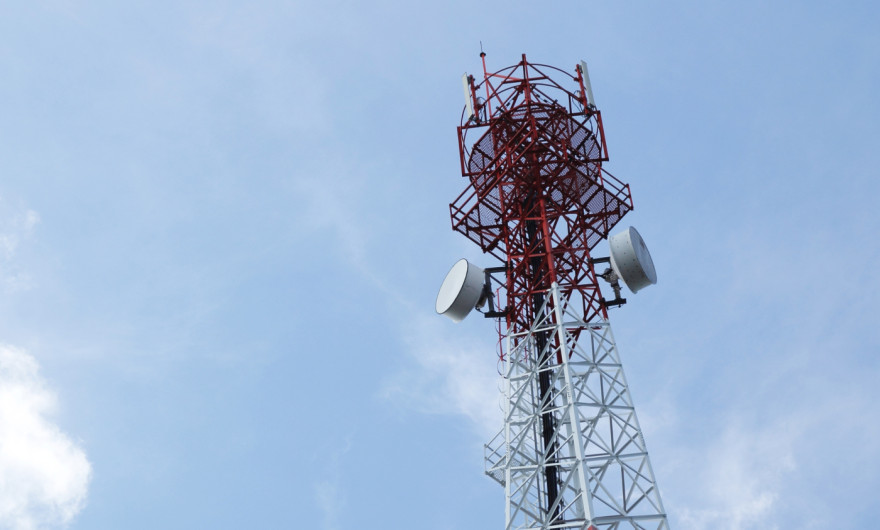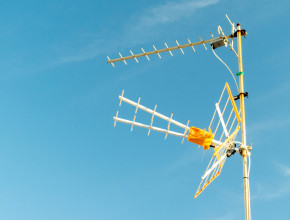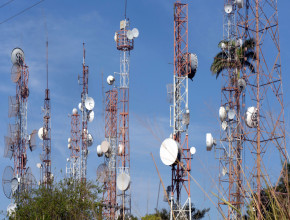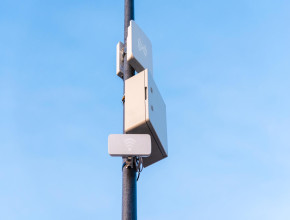
In this digital world, fast and efficient wireless communication is non-negotiable for many industries. The microwave antenna plays a vital role here! They facilitate smooth connectivity and uninterrupted signals in many applications. For instance, satellite communication, cellular networks, radar systems, and others.
As there is a wide variety available in the market, choosing the right microwave antenna can be a difficult task. So, today we will discuss everything you need to know about the microwave antenna that will help you in making informed decisions. Let's get started!
What is a Microwave Antenna?
A microwave antenna is the physical transmission device that sends and receives electromagnetic waves between two or more locations. It typically operates from 5.925 GHz to 86 GHz. It can be either the omnidirectional antenna or a directional antenna based on its design and pattern. These antennas are crucial for point-to-point communication, radar systems, satellites, and more.
Types of Microwave Antenna
There are many types of Microwave antennas available in the international markets. They are designed to serve in different applications. Below are the types of microwave antennas:
1) Parabolic Antenna
Parabolic antenna consists of a parabolic reflector and a feed antenna. These are used to focus microwave energy. It is a highly directional microwave antenna that offers high gain and a narrow beamwidth. Parabolic antennas are employed in satellite communication, radio telescopes, terrestrial point-to-point links, and more.
2) Slot Antenna
A slot antenna has narrow openings or slots in the metal sheet of the waveguide. It provides efficient radiation for strong wireless communication. This antenna has a compact design, which results in easy installation. A slot antenna is used in many applications, like aircraft systems, wifi, and cellular networks, and more.
3) Horn Antenna
A horn antenna consists of a flaring metal waveguide shaped like a horn to direct radio waves in a beam. horn antenna is a directional antenna that is used in radar systems, astronomy, radiometry, and others. They are ideal for these because of their directional pattern and simple construction.
4) Helical Antenna
A helical antenna has a helical shape. This helps in transmitting and receiving uninterrupted signals. It can be either a directional antenna or an omnidirectional antenna. Choose the antenna depending on where it is intended to be used. The helical antenna is widely used in satellite and space communication, radio astronomy, medical applications, and more.
5) Microstrip Patch Antenna
A microstrip patch antenna is a lightweight and low-cost antenna. It can be designed for either linear or circular polarization. The microstrip patch antenna is used extensively in GPS, cellular phones, and other devices.
Factors For Choosing the Right Microwave Antenna
A microwave antenna is a very crucial device that is used in many industries to provide high-speed signals and strong connectivity. There are many different types of microwave antennas available in the market. Always select the best microwave antenna on the basis of your specific requirements. Here are the key factors that you need to consider to choose the right antenna:
1) Frequency and Bandwidth
Select the best microwave antenna that is designed to operate according to the frequency range of your system. The higher frequencies of more than 10 GHz offer higher bandwidth. This is best suited for high-speed internet and satellite communication. The frequency of less than 10 GHz offers a smaller bandwidth. These are best for longer distances and better penetration of obstacles. But it limits the data rates and capacity.
2) Gain
Gain is a very important factor in selecting the right antenna. It is the measurement of how well the antenna converts input power into radio waves in a specific direction. A higher gain is useful for longer distances, but it narrows the antenna’s reception angle. Go for a higher-gain antenna for long-distance applications. Choose the lower-gain microwave antenna if you want to employ it in more varied terrain or track a moving object.
3) Directivity
Directivity refers to the measurement of how focused the antenna's signal is in a single direction. It is closely related to the gain of the antenna. High directivity is essential in applications where highly focused signals are needed. For instance, testing systems and point-to-point links. The microwave antenna that has high directivity has a complex structure, including the parabolic reflectors, phased arrays, and more.
4) Polarization
Polarization of the antenna is defined as the direction of the electromagnetic fields produced by an antenna. The polarisation between the transmitting and receiving antennas should match for optimal performance. There are three types of polarizations: Circular, linear, and dual. Select the antenna with the right polarization according to your specific needs.
5) Radition Pattern
This refers to the direction and strength of the microwave antenna signal. An omnidirectional antenna transmits and receives signals in all directions horizontally. They are best for covering a wide area in mobile or urban environments. A directional antenna provides signals in a single direction. They are best for the focused signals and long-distance links. These antennas reduce interference from other sources.
6) Operating Environment
The physical surroundings play a crucial role in the selection of the right antenna. The microwave antenna that is employed in harsh weather conditions like rain, sunlight, and humidity must be constructed with durable and specifically resistant materials. The microwave antenna with frequencies more than 10 GHz is most vulnerable to rain fade. Circularly polarized antennas are most suited to these weather conditions.
Conclusion
The microwave antenna is an indispensable device in the modern wireless communication system. They are useful in enabling many modern-day technologies like radar systems, cellular networks, and satellite links. You should always make your choice on the basis of your requirements. Consider the above-mentioned factors if you are confused about choosing the best microwave antenna. These factors directly impact the antenna’s performance and efficiency.
If you are still finding it difficult to get the right microwave antenna, then it is preferred that you get in touch with the trusted antenna manufacturer. They provide a wide range of microwave antennas according to the demands of the clients.





